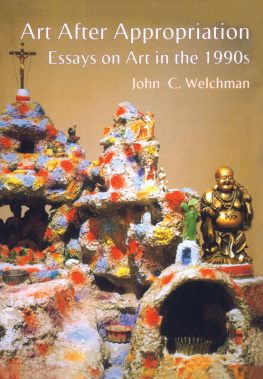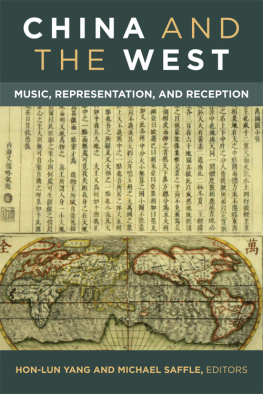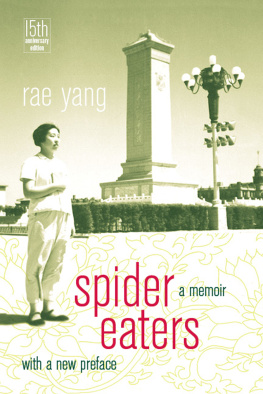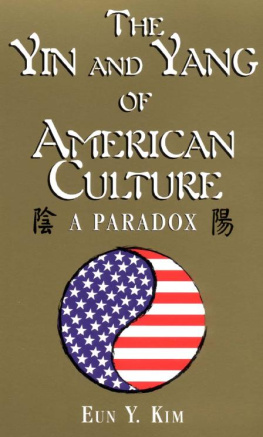Shuhui Yang - Appropriation and Representation
Here you can read online Shuhui Yang - Appropriation and Representation full text of the book (entire story) in english for free. Download pdf and epub, get meaning, cover and reviews about this ebook. year: 2020, publisher: Kenneth G. Lieberthal and Richard H. Rogel Center for Chinese Studies, genre: Detective and thriller. Description of the work, (preface) as well as reviews are available. Best literature library LitArk.com created for fans of good reading and offers a wide selection of genres:
Romance novel
Science fiction
Adventure
Detective
Science
History
Home and family
Prose
Art
Politics
Computer
Non-fiction
Religion
Business
Children
Humor
Choose a favorite category and find really read worthwhile books. Enjoy immersion in the world of imagination, feel the emotions of the characters or learn something new for yourself, make an fascinating discovery.
- Book:Appropriation and Representation
- Author:
- Publisher:Kenneth G. Lieberthal and Richard H. Rogel Center for Chinese Studies
- Genre:
- Year:2020
- Rating:3 / 5
- Favourites:Add to favourites
- Your mark:
- 60
- 1
- 2
- 3
- 4
- 5
Appropriation and Representation: summary, description and annotation
We offer to read an annotation, description, summary or preface (depends on what the author of the book "Appropriation and Representation" wrote himself). If you haven't found the necessary information about the book — write in the comments, we will try to find it.
Appropriation and Representation — read online for free the complete book (whole text) full work
Below is the text of the book, divided by pages. System saving the place of the last page read, allows you to conveniently read the book "Appropriation and Representation" online for free, without having to search again every time where you left off. Put a bookmark, and you can go to the page where you finished reading at any time.
Font size:
Interval:
Bookmark:

Appropriation and Representation
Feng Menglong and the Chinese Vernacular Story
Shuhui Yan
CENTER FOR CHINESE STUDIES
THE UNIVERSITY OF MICHIGAN
ANN ARBOR
Open access edition funded by the National Endowment for the Humanities/Andrew W. Mellon Foundation Humanities Open Book Program.
MICHIGAN MONOGRAPHS IN CHINESE STUDIES
ISSN 1081-9053
SERIES ESTABLISHED 1968
VOLUME 79
Published by
Center for Chinese Studies
The University of Michigan
Ann Arbor, Michigan 48104-1608
1998 The Regents of the University of Michigan
Printed and made in the United States of America
Library of Congress Cataloging-in-Publication Data
Yang, Shuhui.
Appropriation and representation : Feng Menglong and the Chinese vernacular story / Shuhui Yang
p. cm.
(Michigan monographs in Chinese studies; 79)
Includes bibliographical references and index.
ISBN 0-89264-125-8 (alk. paper)
1. Feng, Meng-lung, 1574-1646 Criticism and interpretation.
2. Feng, Meng-lung, 1574-1646. Y shih ming yen.
3. Feng, Meng-lung, 1574-1646. Ching shih tung yen.
4. Feng, Meng-lung, 1574-1646. Hsing shih heng yen.
5. Folk literature, Chinese History and criticism.
6. Women in literature.
I. Title. II. Series
PL2698.F4Z98 1998
895.134609dc21 97-46019
CIP
ISBN 978-0-892641-25-3 (hardcover)
ISBN 978-0-472-03810-7 (paper)
ISBN 978-0-472-12756-6 (ebook)
ISBN 978-0-472-90151-7 (open access)
The text of this book is licensed under a Creative Commons Attribution-NonCommercial-NoDerivatives 4.0 International License: https://creativecommons.org/licenses/by-nc-nd/4.0/
To Yunqin
Contents
I have accumulated many debts of gratitude in the preparation of this book, and I would like to take this opportunity to thank all my teachers at Fudan University and Washington University, and all the friends who have encouraged, inspired and helped me. My biggest debt is to Robert E. Hegel, my mentor and advisor at Washington University when I was a graduate student. Without his advice and support, which I continue to benefit from, it would be impossible for me to be where I am now academically. I am also grateful to William Matheson and Emma Kafalenos for their advice during my graduate study. I owe special thanks to Tony Chang for always providing me with timely and accurate bibliographical information in my research. I also must thank Martin W. Huang (now at the University of California, Irvine) and Guan Daoxiong (now at the University of California, Santa Barbara) for generously sharing their expertise and resources on Chinese literature.
I am grateful to David L. Rolston, who did a thorough and careful reading of the entire book manuscript and offered many helpful suggestions. My thanks also go to Katherine Carlitz for her insightful comments on the second chapter at the 1995 AAS Conference in St. Louis, Missouri. I also wish to thank the two anonymous readers for the Center of Chinese Studies who made abundant useful suggestions, and my copyeditor Terre Fisher who provided expert assistance during the final stages of manuscript preparation. I have benefited greatly from these suggestions, although I have not been able to incorporate all of them, and if any errors remain in the book, I take complete responsibility for them.
Last but not least, I wish to thank Yunqin Yang, who helped to make my life meaningful during extended periods of stress and who contributed so much intellectually and emotionally to this study. To her this book is dedicated.
The romanization system used in this book is pinyin. For the convenience of readers who are more accustomed to the Wade-Giles system of spelling, here is a quick reference for the most difficult consonants:
c=ts
q=ch
x=hs
z=tz
zh=ch
For the spelling of Chinese words of two or more characters (or syllables), this book follows the rules of Xiandai Hanyu cidian (Beijing: Shangwu, 1979). Apostrophes are used between two vowels, or between one consonant and one vowel, but not between two consonants. For example, an apostrophe appears in Tiananmen, but not in shange.
For the sake of consistency, romanized words in citations are all changed to pinyin, with the exception of published titles.
Citations from the Sanyan collections in this volume come from the following editions: Yushi mingyan, Xu Zhengyang, ed. (Beijing: Renmin wenxue, 1987); Jingshi tongyan, Yan Dunyi, ed. (Beijing: Renmin wenxue, 1987); and Xingshi hengyan, Gu Xuejie, ed. (Beijing: Renmin wenxue, 1987). Facsimile reprints of Ming editions of Gujin xiaoshuo, Jingshi tongyan, and Xingshi hengyan, edited by Li Tianyi (Taipei: Shijie shuji, 195859) are used only for citing the extra-textual commentary, which does not appear in the more recent editions.
Source materials that I compare with the stories edited and published by Feng Menglong come, in the main, from Tan Zhengbis Sanyan Liangpai ziliao (Shanghai: Shanghai guji, 1980). All citations from the above works are my own translations unless otherwise noted.
This study addresses the role played by Feng Menglong (15741646) in compiling the famous Sanyan collections and his important position in the evolution of the Chinese vernacular short story. I will examine Fengs methods of selecting source materials and demonstrate how, as part of his narrative strategy, he creatively manipulated elements of both popular and literati cultures to elevate this then-underrated literary genre.
The term Sanyan, literally meaning three words, refers to three Ming dynasty collections of huaben (vernacular short stories), entitled respectively, Stories Old and New (Gujin xiaoshuo) or Illustrious Words to Instruct the World (Yushi mingyan), Scholars generally agree that these collections of forty stories each were published in 1620, 1624, and 1627, and were edited by Feng Menglong, a member of the late Ming literati class recognized as the most knowledgeable connoisseur of popular literature of his time.
is primarily concerned with the way women are represented in the Sanyan collections. It explains why it is often the heroine, not the hero, who initiates the struggle against the restrictions of conventional morality. It also explores to what extent Feng Menglong was involved in elevating the image of women in these stories and what the elevation of women by this male author reveals.
The remainder of this introduction will lay out the theoretical framework for my discussion of Fengs involvement with the Sanyan collections. As a point of departure, I will address the elite uses of popular materials by reviewing Robert Redfields model of great tradition (elite culture) versus little tradition (popular culture), with special attention to the interflow between these two traditions. I then propose reading the Sanyan stories in light of Mikhail Bakhtins dialogism and Michael Holquists ventriloquism: these theories justify my focus on the literati editor Feng Menglong as a conscious manipulator of his literary materials, rather than on the popular sources of the stories. And finally, I will modify Holquists paradigm of the ownership of meaning/language to describe the evolution of the Chinese vernacular story (from ca. 1550 to 1658) in terms of literati authorship, and to show the importance of Feng Menglongs Sanyan in this belletricizing process.
Font size:
Interval:
Bookmark:
Similar books «Appropriation and Representation»
Look at similar books to Appropriation and Representation. We have selected literature similar in name and meaning in the hope of providing readers with more options to find new, interesting, not yet read works.
Discussion, reviews of the book Appropriation and Representation and just readers' own opinions. Leave your comments, write what you think about the work, its meaning or the main characters. Specify what exactly you liked and what you didn't like, and why you think so.

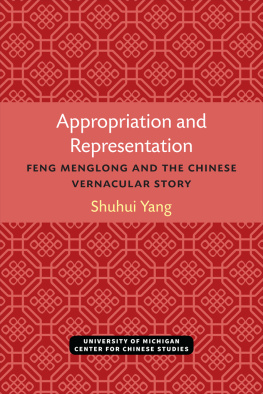

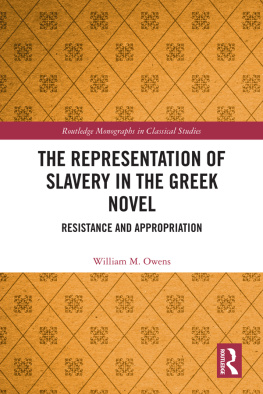
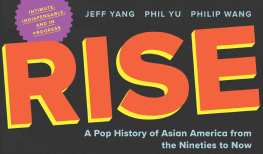
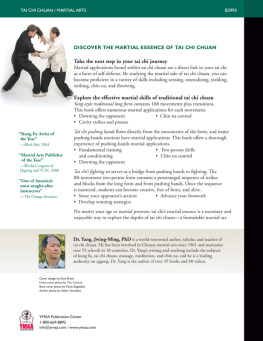

![Yang - The latehomecomer: [a Hmong family memoir]](/uploads/posts/book/165016/thumbs/yang-the-latehomecomer-a-hmong-family-memoir.jpg)
